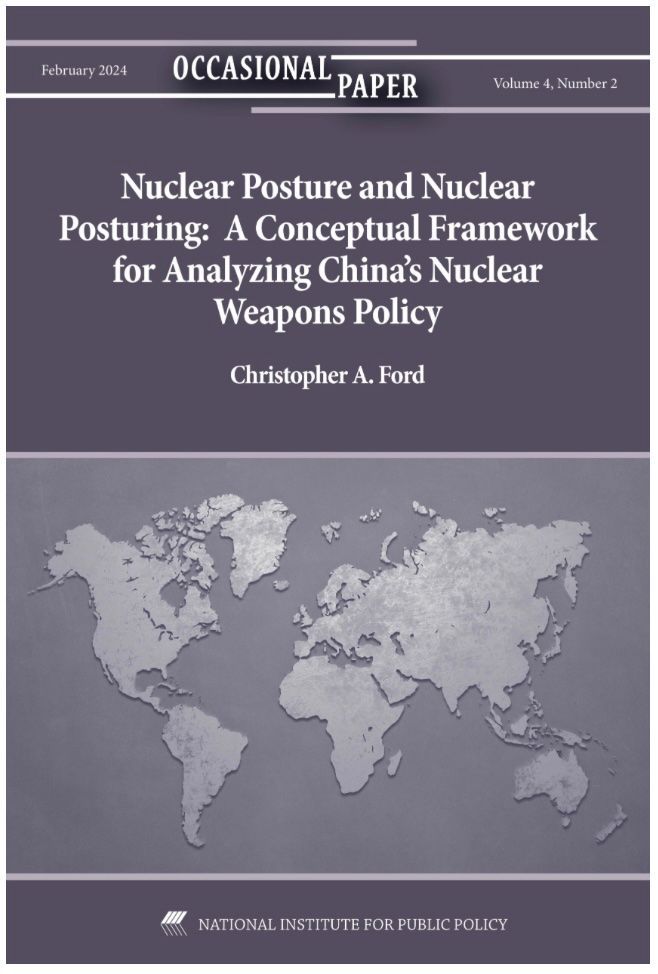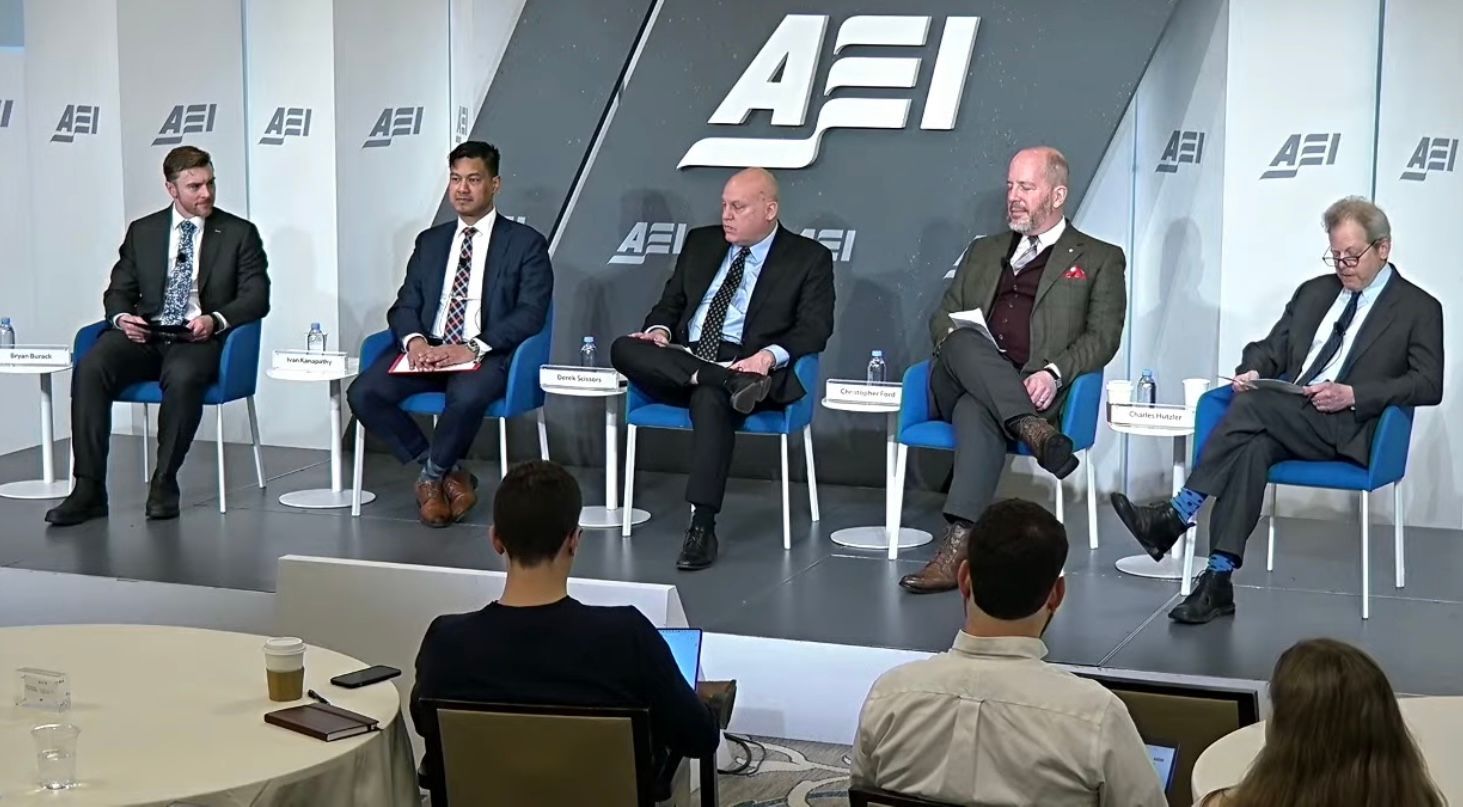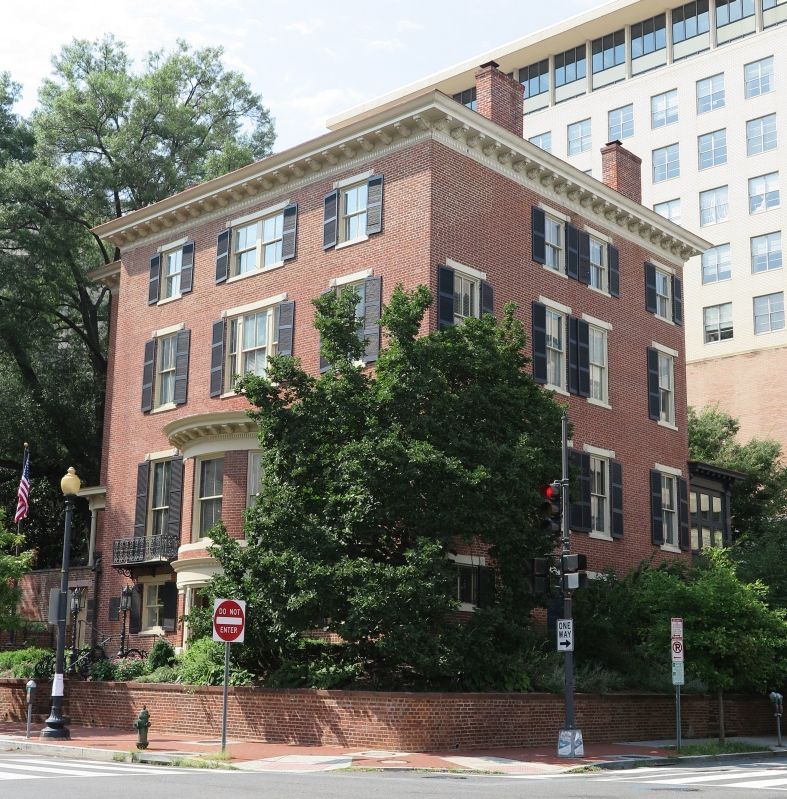The Hon. Christopher A. Ford
New Paradigms Forum -- International Security Policy Since 2009
The United States and the Fissile Material Cutoff Treaty
Note:
Written by Dr. Christopher A. Ford, United States Special Representative for Nuclear Nonproliferation, delivered at the Conference on "Preparing for 2010: Getting the Process Right", Annecy, France, March 17, 2007. These remarks long predate the establishment of this website, but they are reprinted here for your convenience.
The United States believes strongly that establishing a global norm banning the production of fissile material for use in nuclear weapons or other nuclear explosive devices would serve important nonproliferation goals. Achieving such a ban on such fissile material through an international convention has also long been regarded as an important objective by many nations as a step toward nuclear disarmament as envisioned by the Nuclear Nonproliferation Treaty (NPT).
Introduction of Draft FMCT in Geneva
In May 2006, the United States offered the Conference on Disarmament (CD) in Geneva a roadmap for achieving the goal of a Fissile Material Cutoff Treaty (FMCT) by tabling a draft treaty text, the first concrete proposal for an FMCT offered by any nation. The United States also tabled a draft negotiating mandate for this treaty, in order to help get this process underway as rapidly as possible.
The United States has been working vigorously with others in the CD to move this issue forward to negotiations, and it hopes the CD will conclude a treaty as soon as possible. The successful negotiation of an FMCT in the CD would be both a significant contribution to the global nonproliferation regime and an example of effective multilateralism. If other governments are willing to match this U.S. commitment to an FMCT and abandon tactics that delay progress at the CD by linking progress on FMCT to other issues upon which there is no consensus to proceed, it will be possible to move forward on this issue and finally make the production of fissile material for use in nuclear weapons illegal.
U.S. Commitment to FMCT Goals
The U.S. commitment to ceasing the production of fissile materials for use in nuclear weapons or other nuclear explosive devices is not merely a rhetorical one. On the contrary, the United States has clearly demonstrated this commitment by its actions.
While promoting the achievement of an FMCT, the United States has been unilaterally reducing its own stockpile of fissile material. The United States has declared approximately 174 metric tons of highly enriched uranium (HEU) and 52 tons of plutonium to be surplus to national security needs, and has placed some of this material under International Atomic Energy Agency (IAEA) safeguards. The United States has down-blended over 90 tons of surplus U.S. HEU, turning it into low enriched uranium (LEU) for use in civilian or research reactors. Moreover, these efforts are ongoing. In November 2005, in fact, the United States announced that it would remove an additional 200 metric tons of HEU from use in U.S. nuclear warheads - enough material, based upon IAEA figures, to make 8,000 nuclear weapons. [1]
The United States also continues extensive bilateral efforts with Russia to cooperatively eliminate surplus fissile materials from the weapons stocks of each country. The HEU Purchase Agreement provides for U.S.-Russian cooperation to down-blend 500 metric tons of HEU from Russian nuclear weapons, over 250 MT of which has already been down-blended into reactor fuel used in the United States. (This remarkable effort means that ten percent of the electricity consumed by the U.S. population is today being generated from fissile material extracted from nuclear weapons previously deployed by the former Soviet Union.) The United States is also cooperating with Russia on a joint program to turn 68 metric tons of former nuclear weapons plutonium (34 of them from Russia) into forms unusable in nuclear weapons. Again, based upon IAEA figures, these various U.S.-Russian initiatives should account for enough nuclear material to make 24,500 nuclear weapons. [2]
As it has been working to reduce the stocks of fissile material available for use in nuclear weapons, moreover, the United States has demonstrated its commitment to ensuring that no further such material comes into existence anywhere -- the core goal of an FMCT. The United States has not produced highly enriched uranium for use in nuclear weapons since 1964, and ceased to produce plutonium for use in nuclear weapons in 1988. The United States has repeatedly reaffirmed its production moratorium, and has also repeatedly called on states that have not done so to make and adhere to similar pledges. The United States, however, feels that it would best serve international peace and security for such production moratoria to be made legally-binding and extended to as many states as possible through an FMCT.
Structure and Content of an FMCT
The United States has given considerable thought to what an FMCT should look like. The basic obligation under such a treaty, effective at entry into force, would be a ban on the production of fissile material for use in nuclear weapons or other nuclear explosive devices. The treaty would be a ban on production for such purposes; stocks of already-existing fissile material would be unaffected by the FMCT. The production of fissile material for non-explosive purposes also would be unaffected by the treaty. (In the judgment of the United States, it would not be possible to achieve agreement on a treaty that was not structured in this fashion.) The definitions set forth in the U.S. draft treaty on "fissile material" and "production" represent the outgrowth of the decade-long international discussion regarding what an FMCT should encompass.
Verification Issues The U.S. draft treaty omits verification provisions, because it is the conclusion of the United States that effective verification of an FMCT cannot be achieved. The United States has concluded that there is no achievable combination of verification and monitoring means and measures that would enable the United States and other parties to the agreement to detect noncompliance in time to convince a violator to reverse its actions, or to take such steps as may be needed to reduce the threat presented and deny the violator the benefits of its wrongdoing. The nature of the questions that would have to be answered for FMCT verification are qualitatively different from those involved in verifying compliance with IAEA safeguards. For safeguards, the task is to detect diversion of fissile material from clearly peaceful nuclear efforts to purposes unknown and to verify the absence of undeclared materials. Discovery of non-safeguarded material that should have been safeguarded or of the diversion of safeguarded material to nuclear explosive purposes is, in effect, itself the discovery of noncompliance.
For an FMCT, however, the verification objective would be to detect production of fissile material for nuclear explosive purposes. For the FMCT, therefore, discovery of undeclared material would only begin the inquiry. Thereafter, investigators would have to determine whether this material had been produced for an improper purpose and whether it had been produced subsequent to the cutoff. This introduces technical uncertainties, since the production date of fissile material cannot always be determined. Still more problematically, it would require inspectors to demonstrate the purpose for which material had been produced. Furthermore, inspectors would have to carry out verification tasks in a physical environment in which there may have been substantial production of fissile materials prior to entry into force of the ban.
Stocks of such material will continue to exist outside the FMCT, and sensitive activities unconstrained by the treaty may continue at certain facilities that governments may be reluctant to open to international inspection.
Nor would an FMCT verification system be able to get around this problem by focusing merely upon detecting undeclared production facilities, for this too would be enormously difficult. In the NPT nuclear weapons states, for instance, an FMCT verification regime would have to detect FMCT-noncompliant nuclear production activity at sites and facilities associated with nuclear weapons without compromising proliferation-sensitive information; this would place legitimate constraints upon the intrusiveness of inspections. NPT non-Parties also have extensive nuclear fuel cycles that would make the problem of detecting undeclared activities difficult.
Any verification scheme for an FMCT would have to address six fundamental verification issues: (1) detection of production of fissile material at clandestine facilities; (2) monitoring declared fissile material production facilities; (3) providing for the exclusion from verification of fissile material produced for non- proscribed but sensitive ( e.g. , military) uses after the Treaty's production cut-off date; (4) monitoring material declared as having been produced after the cut-off date, to verify that it is not diverted; (5) excluding from verification fissile material produced before the cutoff date; and (6) determination of acceptable end-use of material produced after the cut-off date. The United States has concluded that, even with extensive verification mechanisms and provisions - so extensive that they could compromise core national security interests, and so costly that many countries would be hesitant to implement them -- and even coupled with the complementary employment of national means and methods of verification, it would not be possible to achieve adequate confidence in FMCT verification.
The United States believes it is unrealistic to expect negotiations to produce an international verification regime that successfully addresses these issues, or to expect that such a regime could be effectively implemented in key signatory states. Furthermore, mechanisms and provisions that provide the appearance of effective verification could provide a false sense of security leading governments -- individually or collectively -- to fail to guard against possible violations through application of their respective national means of verification. The U.S. draft FMCT text would permit any Party to use information it might obtain by national means and methods (NMM) of verification. This is an important principle. All parties to a Treaty should vigilantly use NMM whether or not there exists an international verification mechanism.
Fundamentally, all States Party within a treaty regime have an interest in vigilance, and all have a variety of means at their disposal for acquiring information and exercising independent judgment in making compliance assessments. No country should cede to others its power of independent judgment. Questions that arise should be addressed through consultations. The U.S. draft also provides that implementation questions will be addressed through consultations and that any Party may bring compliance concerns to the attention of the other Parties, and it provides for a means to convene States Party to consider such matters.
Finally, recourse to the United Nations Security Council would also be possible if questions arise that are within its competence.
The Way Ahead
The principal roadblock to making progress on FMCT is the insistence of some members of the CD that FMCT negotiations cannot begin without agreement to a work program that includes either negotiations on, or subsidiary bodies to address, other issues on which there is no consensus. The United States has been clear that it opposes any such "package deal" on the program of work, because the FMCT is the only issue before the CD that is ripe for negotiations.
The choice before us, in other words, is between a CD that remains deadlocked and ineffective and a CD which is finally able to move forward and achieve an FMCT. Those who genuinely seek the achievement of an FMCT should support rapidly moving into negotiations.
The United States hopes that negotiations in Geneva on an FMCT can begin in the very near future and reach a speedy outcome. The United States also reiterates its view that, pending the conclusion of a Fissile Material Cutoff Treaty and its entry into force, all states should declare publicly, and should observe, amoratorium on the production of fissile material for use in nuclear weapons or other nuclear explosive devices - just as the United States has maintained since 1988.
Conclusion
States Party to the NPT can help facilitate the achievement of an FMCT in the CD by affirming their commitment to negotiating such a legally-binding treaty as quickly as possible, and by urging the CD to move rapidly toward this end without getting sidetracked by counterproductive "linkages" to non-FMCT topics. This would represent important progress toward the goals expressed in the Preamble to the NPT and in its Article VI, and deserves widespread support during the current NPT review cycle. The United States believes that with political will and commitment from States Party to the NPT, it may be possible to achieve agreement upon an FMCT in time for the NPT Review Conference in 2010.
NOTES
[1] According to the IAEA, 25 kilograms of HEU is a "significant quantity," defined as the amount "for which the possibility of manufacturing a nuclear explosive device cannot be excluded."
[2] According to the IAEA, eight kilograms of plutonium constitutes a "significant quantity."



Copyright Dr. Christopher Ford All Rights Reserved






